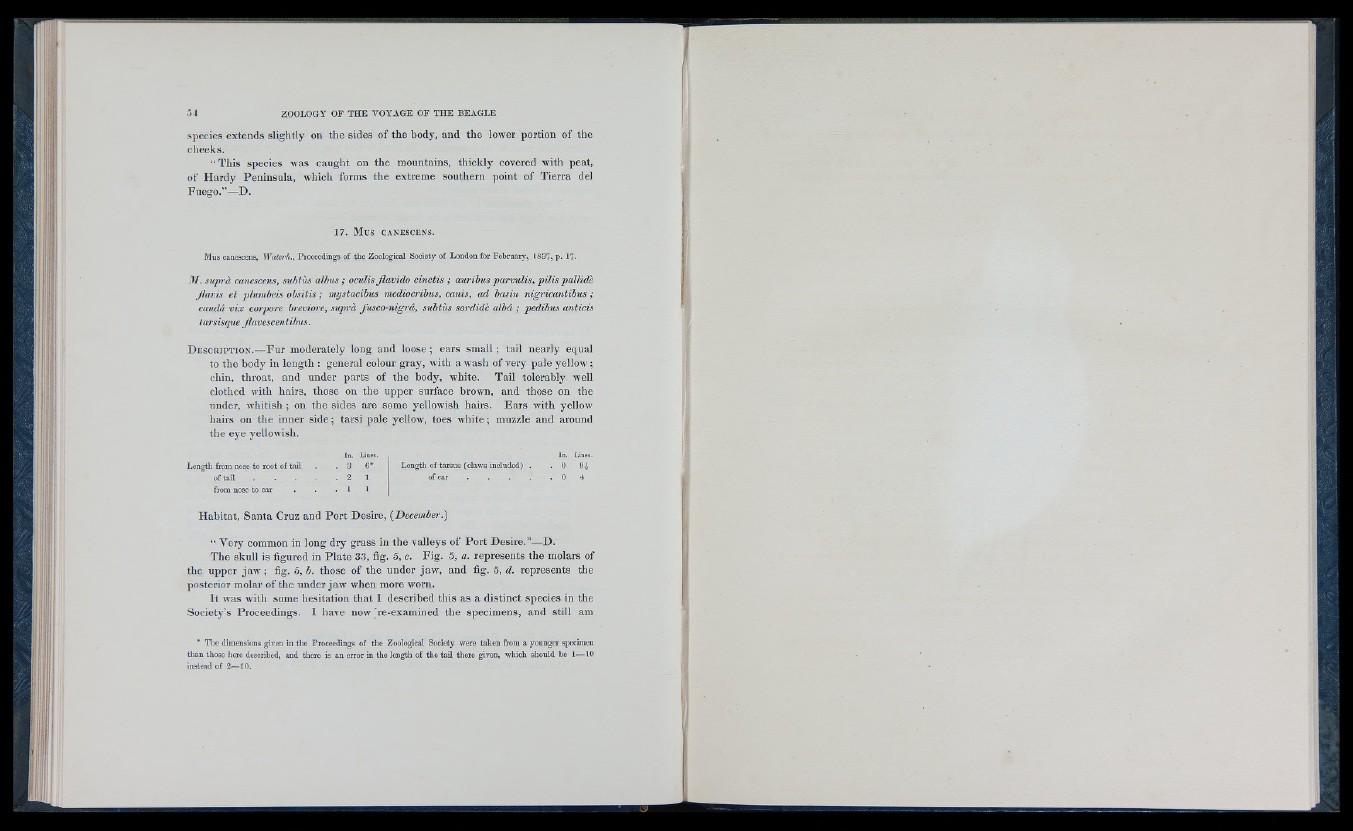
species extends slightly on the sides of the body, and the lower portion of the
cheeks.
“ This species w'as caught on the mountains, thickly covered with peat,
of Hardy Peninsula, which forms the extreme southern point of Tierra del
Fuego.”—D.
Mus cauescens, IVaierA.,
17. Mus CANESCENS.
of the Zoological Society of London for February, 1837, p. 17-
31. suprà canesceus, suhfks albus ; oculis flavido cinctis ; auribus pai'vulis, pilis pallidè
Jiavis et plumbeis obsitis ; mystacibus mediocribus, canis, ad basin nigricantibus ;
caudd vix corpore breviore, suprà fusco-nigrâ, subtùs sordidè albâ ; pedibus anticis
tarsisque Jlavescentibus.
D e s c r ip t io n .—Fur moderately long and loose ; ears small ; tail nearly equal
to the body in length : general colour gray, with a wash of very pale yellow ;
chin, throat, and under parts of the body, white. Tail tolerably well
clothed with hairs, those on the upper surface brown, and those on the
under, whitish ; on the sides are some yellowish hairs. Ears with yellow
hairs on the inner side ; tarsi pale yellow, toes white ; muzzle and around
the eye yellowish.
Length from nose to root of tail
of tail
from nose to ear
3 6* Length of tarsus (claws included) .
of ear
H
Habitat, Santa Cruz and Port Desire, (December.)
“ Very common in long dry grass in the valleys of Port Desire.”—D.
The skull is figured in Plate 33, fig. 5, c. Fig. 5, a. represents the molars of
the upper jaw ; fig. 5, b. those of the under jaw, and fig. 5, d. represents the
posterior molar of the under jaw when more worn.
It was with some hesitation that I described this as a distinct species in the
Society’s Proceedings. I have now 're-examined the specimens, and still am
* The dimensions given in the Proceedings of the Zoological Society were taken from a younger specimen
than those here described, and there is an error in the length of the tail there given, whicli should he 1—10
instead of 2— 10.